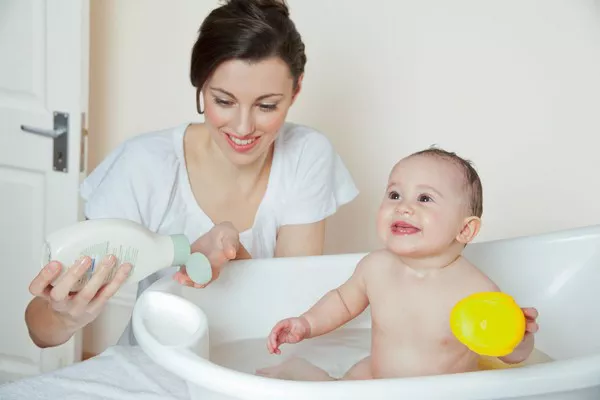Welcoming a newborn into the world is an extraordinary experience filled with immense joy and responsibility. One of the initial tasks caregivers undertake is ensuring the baby’s hygiene. Among the essential rituals in infant care is the sponge bath, a gentle and effective method to cleanse newborns. Unlike traditional tub baths, where immersion in water occurs, sponge baths involve using a damp cloth or sponge to cleanse the baby’s delicate skin.
Sponge baths hold particular significance for newborns, especially during the initial weeks after birth when the umbilical cord stump is still attached. This period is crucial as it necessitates extra care to prevent infection and promote healing. While sponge baths serve as a primary means of hygiene during this time, they also offer a safe alternative for infants with medical conditions or those recovering from surgical procedures.
When and Why to Give a Sponge Bath:
The timeline for giving newborns sponge baths revolves around the umbilical cord stump. This vital lifeline between mother and baby typically detaches around two weeks after birth. Until then, it’s imperative to avoid submerging the baby in water, making sponge baths the preferred method for maintaining cleanliness.
Furthermore, there are instances beyond the umbilical cord period where sponge baths become necessary. For newborns who have undergone surgical procedures or have stitches or bandages, sponge baths offer a gentle yet effective way to keep them clean without risking complications from soaking in water. In such situations, healthcare providers often recommend sponge baths to ensure proper wound care and prevent infections.
Supplies Needed:
To execute a successful sponge bath, assembling the necessary supplies beforehand is paramount. Here’s a comprehensive list of essential items:
1. Large bowl of warm water: Ensure the water is comfortably warm to avoid shocking the baby’s sensitive skin.
2. Two towels: One towel to lay the baby on and another to cover them during the bath.
3. Two washcloths: Use one for washing with soap and the other for rinsing.
4. Gentle baby soap: Opt for mild, fragrance-free soap specifically formulated for infants to prevent irritation.
5. Cotton balls: These are ideal for cleaning delicate areas such as the eyes and umbilical cord stump.
6. Clean diapers: Have several clean diapers nearby for immediate use after the bath.
7. Baby wipes: Choose alcohol-free, hypoallergenic wipes for gentle cleansing.
8. Clean clothes: Prepare a fresh set of clothes to dress the baby after the bath.
Step-by-Step Instructions for a Sponge Bath:
Now that you’ve gathered the necessary supplies, let’s delve into the step-by-step process of giving your newborn their first sponge bath:
1. Prepare the bathing area: Find a flat, stable surface to lay your baby on, such as a changing table or a bed covered with a clean towel. Ensure the room is comfortably warm to prevent the baby from getting cold.
2. Undress the baby: Gently remove all clothing, leaving only the diaper on. Place the baby on their back on the towel.
3. Cover the baby: Use the second towel to cover the baby, exposing only the areas you’re washing to keep them warm.
4. Clean the eyes: Dampen a few cotton balls with warm water and gently wipe each eye from the inner corner outward. Use a fresh cotton ball for each eye to prevent cross-contamination.
5. Wash the face and ears: Wet a clean washcloth with warm water and gently wipe the baby’s face and outer ears. Avoid using soap on these areas as it may cause irritation.
6. Clean the scalp and neck: Dip the washcloth in soapy water (using a small amount of gentle baby soap) and wring out excess moisture. Gently massage the baby’s scalp with the soapy cloth, paying attention to any cradle cap or dry patches. Rinse the soap off with a clean, damp washcloth.
7. Wash the body: Gradually uncover each limb, washing with the soapy washcloth and paying special attention to creases and diaper areas where dirt and moisture tend to accumulate. Ensure thorough but gentle cleansing to prevent skin irritation.
8. Rinse off the soap: Use the second washcloth dampened with warm water to rinse off any soap residue from the baby’s skin.
9. Dry and dress the baby: Pat the baby’s skin dry with a soft towel, paying extra attention to skin folds to prevent moisture buildup. Dress the baby in clean clothes and a fresh diaper.
10. Care for the umbilical cord stump: After the bath, ensure the umbilical cord stump remains dry and exposed to air to promote healing. Gently pat around the stump area with a dry cotton ball if needed.
Emphasize Keeping the Umbilical Cord Area Clean and Dry:
Throughout the sponge bath process, it’s crucial to prioritize the care of the umbilical cord stump. Keep the area clean by avoiding direct contact with soap or harsh chemicals. After each diaper change and bath, ensure the stump is dry by gently patting it with a clean cotton ball. If you notice any signs of infection, such as redness, swelling, or discharge, contact your healthcare provider promptly for guidance.
Conclusion:
Mastering the art of giving a newborn their first sponge bath is an essential skill for caregivers. By following these step-by-step instructions and prioritizing the baby’s safety and comfort, you can confidently navigate this aspect of infant care. Remember, each baby is unique, so trust your instincts and adapt the process to suit your little one’s needs. With proper preparation and gentle handling, you’ll provide your newborn with a clean and nurturing bathing experience from the very beginning.


